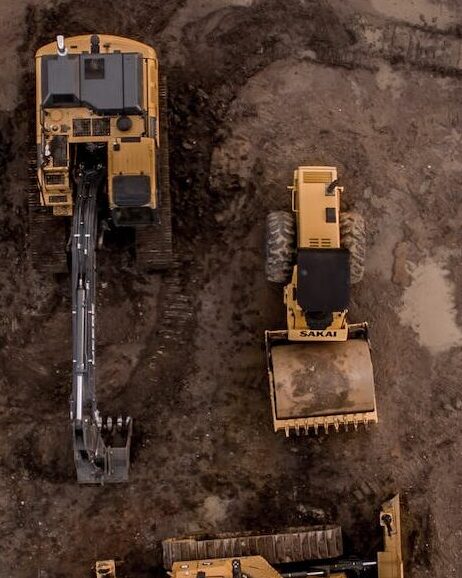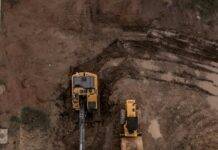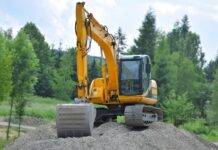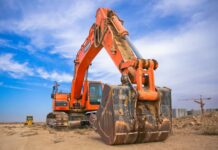
Excavation Hazards and Precautions
Introduction
Excavation Hazards and Precautions : Excavation is an integral part of construction and infrastructure development, but it comes with its share of risks. Safety should be paramount when digging into the earth’s depths to avoid accidents and injuries. In this article, we will explore excavation hazards and the precautions that must be taken to ensure a safe and successful project.
Understanding Excavation Hazards
Excavation sites can be perilous due to various hazards. Let’s delve into some of the most common ones:
Soil Cave-Ins
Soil cave-ins are one of the most dreaded excavation hazards. When the walls of an excavation pit collapse, they can bury workers underneath tons of soil. The weight and force of the soil can lead to severe injuries or fatalities.
Hazardous Atmospheres
Excavation sites might contain hazardous gases or lack oxygen, creating hazardous atmospheres that can be fatal. It’s crucial to monitor and ventilate these areas to prevent accidents.
Common Excavation Hazards
Apart from soil cave-ins and hazardous atmospheres, there are other dangers that excavation workers face:
Utility Strikes
Utility strikes occur when workers accidentally damage underground utility lines, such as gas, water, or electrical cables. These incidents can lead to explosions, electrocutions, or chemical leaks.
Falling Objects
Loose soil or debris from excavation walls can lead to falling objects. These objects can cause serious injuries or fatalities if they strike workers below.
Equipment-Related Hazards
Heavy machinery used in excavation, like excavators and bulldozers, can pose equipment-related hazards. Accidents involving machinery can result in injuries or fatalities if proper safety precautions aren’t followed.
Precautions for Safe Excavation
To ensure safety during excavation projects, several precautions must be taken:
Proper Planning and Inspection
Before starting any excavation work, thorough planning and inspection are essential. This includes identifying potential hazards, evaluating the soil type, and devising a safe work plan.
Protective Systems
Implementing protective systems like sloping, shoring, or shielding can prevent soil cave-ins. These systems provide structural support to the excavation walls and protect workers inside.
Safety Training
Proper safety training is paramount for all workers involved in excavation. They should be trained to identify hazards, use safety equipment, and respond to emergencies.
The Role of Personal Protective Equipment (PPE)
Personal Protective Equipment (PPE) is a crucial aspect of excavation safety. Workers should wear helmets, high-visibility vests, steel-toed boots, and respiratory protection when necessary.
Excavation Safety Tips
- Always call utility companies to mark underground lines before excavation.
- Regularly inspect excavation equipment for maintenance and safety.
- Provide easy access and egress points for workers inside the excavation site.
- Conduct atmospheric testing to detect hazardous gases.
- Keep a safe distance from excavation edges.
- Implement a clear communication system among workers and equipment operators.
Case Studies: Real-Life Excavation Incidents
To emphasize the importance of safety, let’s look at a few real-life excavation incidents, highlighting what went wrong and what could have been done differently.
- Case Study 1: Soil Cave-In
- Incident: Four workers were buried in a soil cave-in.
- Prevention: Proper shoring and shielding could have prevented the collapse.
- Case Study 2: Utility Strike
- Incident: A gas line was struck, causing an explosion.
- Prevention: Calling utility companies for marking could have prevented the strike.
Conclusion
Excavation is a necessary but risky undertaking. Understanding excavation hazards and taking appropriate precautions is vital to ensuring the safety of workers and the success of the project. By following safety guidelines, using protective systems, and providing proper training, we can minimize risks and make excavation projects safer for all.
Excavation Protection Method Sloping/Benching/Shoring/Shielding
FAQs
- What are the most common excavation hazards?
- Common excavation hazards include soil cave-ins, hazardous atmospheres, utility strikes, falling objects, and equipment-related hazards.
- How can I ensure a safe excavation project?
- You can ensure a safe excavation project by proper planning, implementing protective systems, conducting safety training, and using personal protective equipment.
- What protective systems are used in excavation?
- Protective systems like sloping, shoring, and shielding are used to prevent soil cave-ins in excavations.
- Why is safety training crucial for excavation workers?
- Safety training is essential to help workers identify hazards, use safety equipment, and respond effectively to emergencies in excavation sites.
- What types of personal protective equipment should excavation workers use?
- Excavation workers should use personal protective equipment such as helmets, high-visibility vests, steel-toed boots, and respiratory protection as needed.
























